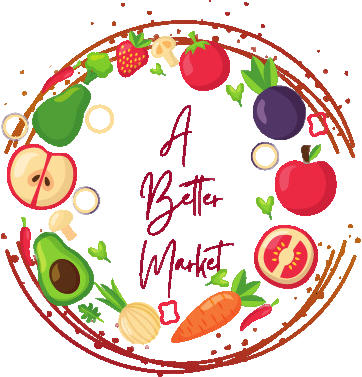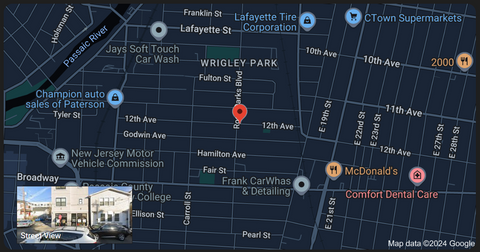There’s been a lot of talk about food deserts in urban and rural areas across the United States, but an equally important issue that needs more attention is food swamps. Food swamps are areas where stores are filled with low-nutrient, high-calorie items, offering little in the way of fresh or healthy options. Paterson, NJ, faces both problems: it’s not only a food desert but also a food swamp. Many of the local mom-and-pop bodegas and corner stores are packed with unhealthy, calorie-dense snacks and drinks, while fresh produce is nearly impossible to find. The main streets are lined with liquor stores and fast-food restaurants, offering highly processed foods loaded with preservatives and sugary beverages.
What makes the situation worse is that many store owners have no real connection to the community—they’re here to make money and leave. This leaves Paterson residents with limited access to healthy food, contributing to poor physical and mental health outcomes. The city has a large African American and Hispanic, as well as a growing Middle Eastern population, communities that already have higher rates of high blood pressure, high cholesterol, diabetes, and obesity.
But what many don’t talk about is how food impacts more than just physical health—it also affects the brain. Think about the times you’ve eaten more salads, fruits, and vegetables or drank more water—do you remember how you felt? Lighter, more energized, and more mentally clear? Healthy eating isn’t just about weight or disease prevention; it can transform your emotional and psychological well-being. We’ve all experienced that mid-afternoon slump. Often, the right foods can be the solution.
So, what can we do to change this? First, start with something simple like drinking more water. Don’t like plain water? Add some lemon for a refreshing detox. Second, add more fruits and vegetables to your diet. We’ve heard this advice over and over because it works. Think of that friend or family member who lost weight—when you ask how they did it, the answer is almost always the same: “I changed how I ate.”
Exercise is important, but what we feed our bodies is key. The food we consume has the power to heal us. Yet, it’s challenging when the unhealthy options are often cheaper and more accessible. With the rising cost of housing and less money left for food, many people find it hard to prioritize healthier choices.
Let’s take a moment to consider the typical weekly store circular, especially at the beginning of the month when EBT cards are replenished. What’s usually on sale? Sugary snacks, sodas, ice cream, and processed foods. Fresh produce, however, is rarely discounted at the beginning of the month. We’re in New Jersey, a state which is home to thousands of farms, yet quality, affordable produce remains out of reach for many.
There’s ongoing discussion about increasing access to SNAP and WIC benefits, but what good are these programs if the food available doesn’t nourish us? What’s the point if local stores are inflating prices, knowing that the community has few alternatives? For many, by the middle of the month, SNAP benefits have already run out because store prices are too high. What remains affordable are processed, calorie-dense foods with little nutritional value—because they last longer and stretch across the month.
This issue is complex and multi-layered. The solution, however, seems straightforward: provide the community with access to healthier options at reasonable prices. Yet time and time again, we see that it’s not that simple. There are systemic obstacles and bureaucratic protocols that block access to something as basic as fresh, affordable food, a fundamental right that everyone should have.
The systemic obstacles and protocols may not be intentional, but I believe that more grassroots individuals need to be involved in finding solutions. Many of those creating these protocols haven’t experienced what it’s like to shop in an urban or rural setting. This disconnect is why more voices from the community are needed. Organizations like United Way of Passaic County have a Food Policy where various groups come together to discuss and strategize on improving healthy food access. A crucial step is the Food Policy Resident Advisory Board, where residents themselves share ideas on how to transform the food landscape in their neighborhoods.
If you haven’t heard of initiatives like these, I encourage you to find one in your area—or feel free to reach out to me. Together, we can work on changing policies and bringing fresh, nutritious food to our community. We deserve better, to live better, and to be better.



